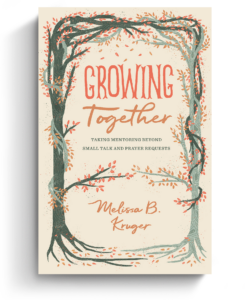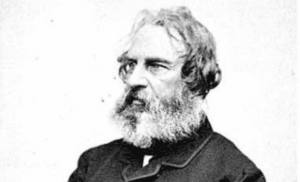This is part 3 in a 5 article series on using memorization to increase knowledge of the Bible and develop a sanctified imagination:
Now that you’ve learned to create images and string them together to memorize lists, let’s examine some of the ways you can expand on that technique to develop your ability to quickly and effectively memorize large collections of information:
Tip #1 – Use images as mnemonic pegs: A mnemonic is a device, such as a formula or rhyme, used as an aid in remembering. You probably already use simple verbal mnemonics to remember such things as which way to turn a screwdriver (righty tighty, lefty loosie), adjust a clock for Daylight Savings Time (spring forward, fall back), or remember musical notation (Every Good Boy Does Fine for treble clef notes on the line E, G, B, D, F and FACE for the spaces on the bass line (F, A, C, E)).
The “peg” in each of these mnemonics is a word that serves as both a reminder and placeholder for an action or item. For instance, “righty tighty” is the peg that reminds us to turn the screwdriver to the right when we want to tighten a screw. Unfortunately, verbal pegs often rely on rhymes (e.g., righty tighty) or words that sound the same but have different meaning (e.g., spring as an action and Spring as a season), which limits the ability to quickly create them. Also, while words are the best tool ever invented for the purpose of communicating, images are the most effective means God has given us for remembering.
In Thomas Aquinas’ magnum opus, Summa Theologica, the theologian lists “four things whereby a man perfects his memory.” The first on his list is creating strong images:
First, when a man wishes to remember a thing, he should take some suitable yet somewhat unwonted [i.e., unusual] illustration of it, since the unwonted strikes us more, and so makes a greater and stronger impression on the mind; and this explains why we remember better what we saw when we were children. Now the reason for the necessity of finding these illustrations or images, is that simple and spiritual impressions easily slip from the mind, unless they be tied as it were to some corporeal image, because human knowledge has a greater hold on sensible objects. For this reason memory is assigned to the sensitive part of the soul.
In The Memory Book, Harry Lorayne and Jerry Lucas offer four simple rules for helping to create such unusual images:
- The Rule of Substitution – Picture one item instead of the other.
- The Rule of Out of Proportion – Try to see items as larger than life.
- The Rule of Exaggeration – Embellish or overstate some feature, number, or expression of the image.
- The Rule of Action – Action is always easier to remember than static imagery, so try to incorporate some form of action into an image.
Applying all of these rules will help to accomplish our goal of developing one of the most important tools for memorization: the ability to quickly create ridiculous and unusual images.
Tip #2 – Link image pegs together: The link system is one of the simplest of all memory techniques and connects many of the other techniques we’ll be using. This method is applied by linking words or images together into a chain by using a sequence of events or simple story. Notice how in our Ten Commandments example, the sequence of events tied each peg to the next one and helped us to remember the order by placing it within a specific context. For short lists, this technique can often be sufficient for your memorization purposes.
Tip #3 – Create a “memory palace”: Next to creating memorable images, the “memory palace” is the single most effective tool for remembering large amounts of material. The invention of the technique is credited to Simonides of Ceos, a famous fifth-century Greek poet. After performing at a banquet, Simonides stepped outside to meet two men who were waiting for him outside. But while he was outside the banquet hall, it collapsed, crushing everyone within. The bodies were so disfigured that they could not be identified for proper burial. But Simonides was able to remember where each of the guests had been sitting at the table, and so was able to identify them for burial. This experience suggested to him the principles that were to become central to the later development of the memory palace.
He inferred that persons desiring to train this faculty (of memory) must select places and form mental images of the things they wish to remember and store those images in the places, so that the order of the places will preserve the order of the things, and the images of the things will denote the things themselves, and we shall employ the places and the images respectively as a wax writing-tablet and the letters written upon it.
This technique, which is also known as the “method of loci”, is a use of an imaginary journey through a sequence of places, or loci, each of which acts as a memory link system. For ancient Greeks, the “places” were often rooms in palaces. But since most of us aren’t intimately familiar with the layouts of any palaces, it’s preferable to use a location that you already know well, such as your current house or apartment or a childhood home. The key is to choose a memory palace that contains at least ten locations (e.g., kitchen, bedroom, bathroom) that can be reached in sequence.
The imagined journey through your memory palace might start on the front porch (Location 1), then into the foyer (Location 2), on into the living room (Location 3), then the kitchen (Location 4), the dining room (Location 5), up the stairs (Location 6), into the hall (Location 7), your bathroom (Location 8), in your bedroom (Location 9), then ending in the spare bedroom (Location 10).
Choose a journey that matches the actual layout of your house. Imagine that you are walking along this journey and don’t cross over your path or backtrack since this could cause you to either miss some locations in your journey or use the same ones twice. You can use the same rooms more than once, even on the same list, but be sure to complete the journey completely before starting again at Location 1. (By the way, this practice is said to be the origin of the expressions “in the first place,” “in the second place,” etc.)
At you visualize each location, imagine always looking at the scene from the same location and perspective and looking around the room in the same order, such as from right to left. Practice mentally following your journeys and be able to visualize as much detail in each location as possible. The more details you can see in each location the more mental hooks you can use to attach your image pegs.
Keep in mind that the memory palace is simply the storehouse for the memorable images you create. It provides a structure to help you remember the order and sequence and to prevent you from leaving items off of a list. Memorizing each specific item in a very specific location will help to prevent getting items out of order or leaving them out altogether.
Tip #4 – Incorporate the “nook and cranny” method: This is a method for expanding the capacity of your memory palace without adding extra rooms. Rather than placing only one peg in each location, you’ll identify three to four areas – which we’ll refer to as “nook” – where you can place your images. For instance, if you use your kitchen as a location you could use the refrigerator (either inside or in front of), the pantry, and a counter space as a nook. Keep in mind that because you will be applying the Rule of Out of Proportion, the mental images will often be larger than would actually fit in the space of your nook. Don’t let that physical constraint concern you: unlike in the real world, your imaginary space will expand to fit the object. The important consideration is not what you choose as a nook, but that you’ve identified several areas in your location where you will be able to place your images. Be sure that you have a minimum of three nooks for every location.
As the author of the famous book on memorization, Rhetorica ad Herennium, noted over 2,000 years ago, there are two kinds of mnemonic images: one for ‘things’ [res], the other for ‘words’ [verba]. That is to say ‘memory for things’ makes images to remind of an argument, a notion, or a ‘thing’; but ‘memory for words’ has to find images to remind of every single word. In this series we’re focusing on “memory for things” (that’s why there is an “almost” in the title). Memory for words is a bit more difficult and relies primarily on drill and repetition (for more on that, see this article).
But for now we’re going to stick with the easier (and more fun) stuff. And for our next task—memorizing a detailed sequence of events and people from the Biblical narrative—these tips will be sufficient.
Before we learn to memorize the narrative of Bible, though, let’s practice using the tips mentioned in this series to memorize another list of item. Choose a list that suits your particular interest. For example, a movie buff can practice by memorizing all of the Best Picture Oscar winners for the past 20-30 years; history buffs can memorize the U.S. Presidents or the monarchy of Britain; literature buffs can memorize the titles of Shakespeare’s plays, etc. The key is to choose a list that you have an interest in remembering and that have between 25-50 times. It may take 30-60 minutes to come up with the images and put them in your memory palace. Then you’ll want to practice by going through your memory palaces and reciting the items in order.
If you do a practice run like this over the weekend, you’ll be completely prepared next week to quickly and easily memorize the events of Genesis.
Involved in Women’s Ministry? Add This to Your Discipleship Tool Kit.
 We need one another. Yet we don’t always know how to develop deep relationships to help us grow in the Christian life. Younger believers benefit from the guidance and wisdom of more mature saints as their faith deepens. But too often, potential mentors lack clarity and training on how to engage in discipling those they can influence.
We need one another. Yet we don’t always know how to develop deep relationships to help us grow in the Christian life. Younger believers benefit from the guidance and wisdom of more mature saints as their faith deepens. But too often, potential mentors lack clarity and training on how to engage in discipling those they can influence.
Whether you’re longing to find a spiritual mentor or hoping to serve as a guide for someone else, we have a FREE resource to encourage and equip you. In Growing Together: Taking Mentoring Beyond Small Talk and Prayer Requests, Melissa Kruger, TGC’s vice president of discipleship programming, offers encouraging lessons to guide conversations that promote spiritual growth in both the mentee and mentor.

































